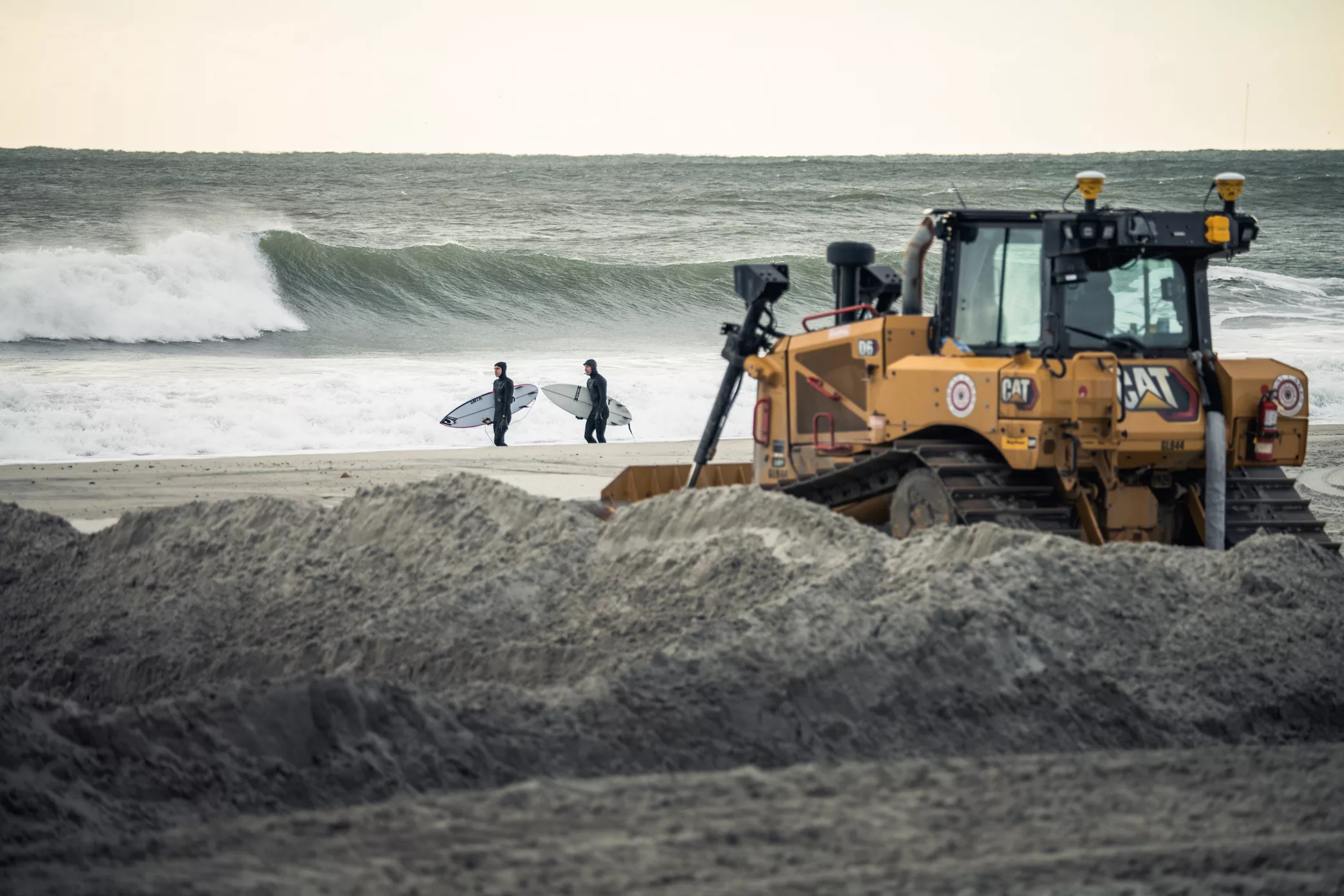Surf photography from the shore is an art form, painting the dance between surfer and sea with every click. It’s about being ready, being in the know, and having the right surf photography gear at your fingertips. Here’s how you can capture the ocean’s poetry from the comfort of the beach.
Choose the Right Location and Timing
Location
Your quest for the ultimate surf shot begins with location scouting. You need a beach that serves up waves like a pro—a place where swells rise and break with a rhythm you can almost predict. Keep an eye on the tides, the way the wind whispers to the waves, and how the swell bends around the coastline. These elements conspire to create the perfect surf tableau.
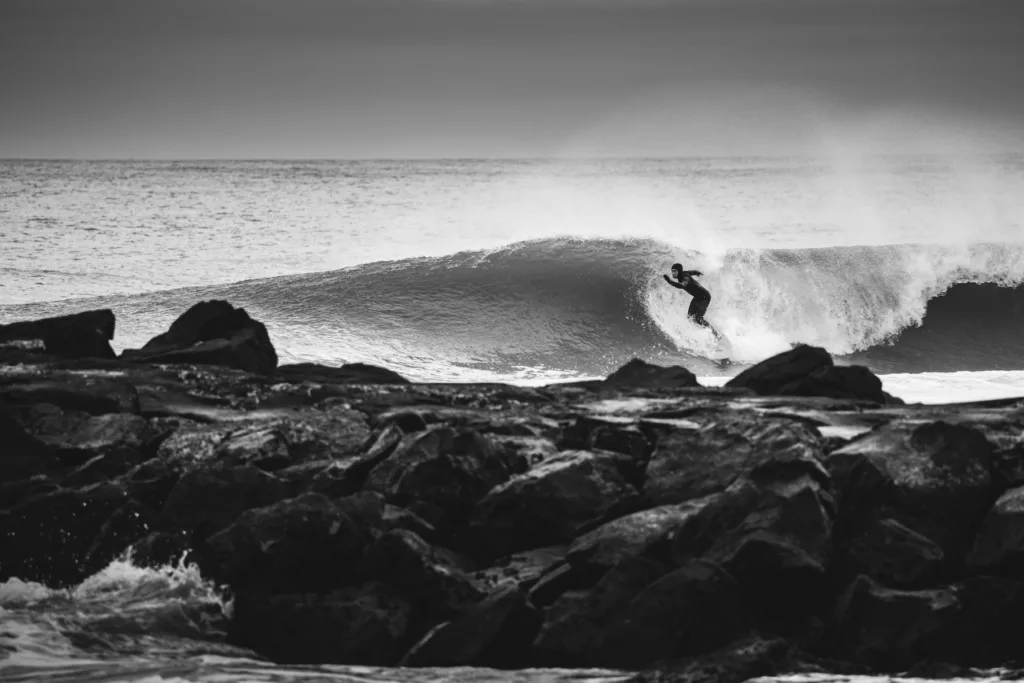
Timing
Timing is everything. The golden hours are your ally, casting a warm glow on water and surfer alike, turning the ordinary into pure gold. Sunrise and sunset are your canvas, painting every wave in hues that digital sensors lust after.
| Section | Key Points |
|---|---|
| High-Speed Sequences | Use burst mode to capture dynamic sequences of surf action. |
| Manual Focus | Switch to manual focus for greater control over fast-moving subjects. |
| Exposure Bracketing | Use different exposures in rapidly changing light to ensure the perfect shot. |
| Creative Use of Filters | Explore ND filters for longer exposures, adding a surreal quality to images. |
| Environmental Portraits | Capture the culture and environment around surfing for a fuller story. |
| Black and White Photography | Convert images to black and white to emphasize contrast and drama. |
| Incorporating Wildlife and Nature | Add elements of wildlife and landscape for context and sense of place. |
| Conclusion: The Art of Capturing the Surf | Combine technical skills with artistic vision to capture the essence of surfing. |
Understand Surf Dynamics
Wave Formation
To capture the wave’s crescendo, you must understand its prelude. Know the swell, the peak, the curl. Like a surfer waiting for the right moment, you too should wait for that perfect formation where potential meets gravity and grace.
Surf Breaks
Each break has its tempo and tells a different story. Beach breaks offer a democratic canvas for surfers, while point breaks and reef breaks compose a more predictable, yet treacherous stage. Know them, and you’ll know where to aim your lens.
Surfer Positioning
Watch the surfers as they jostle with the ocean’s rhythm. Their positioning is a dance, a prelude to the aerials and cutbacks that make for those jaw-dropping shots. Anticipate their moves, and you’ll be rewarded with action-packed frames.
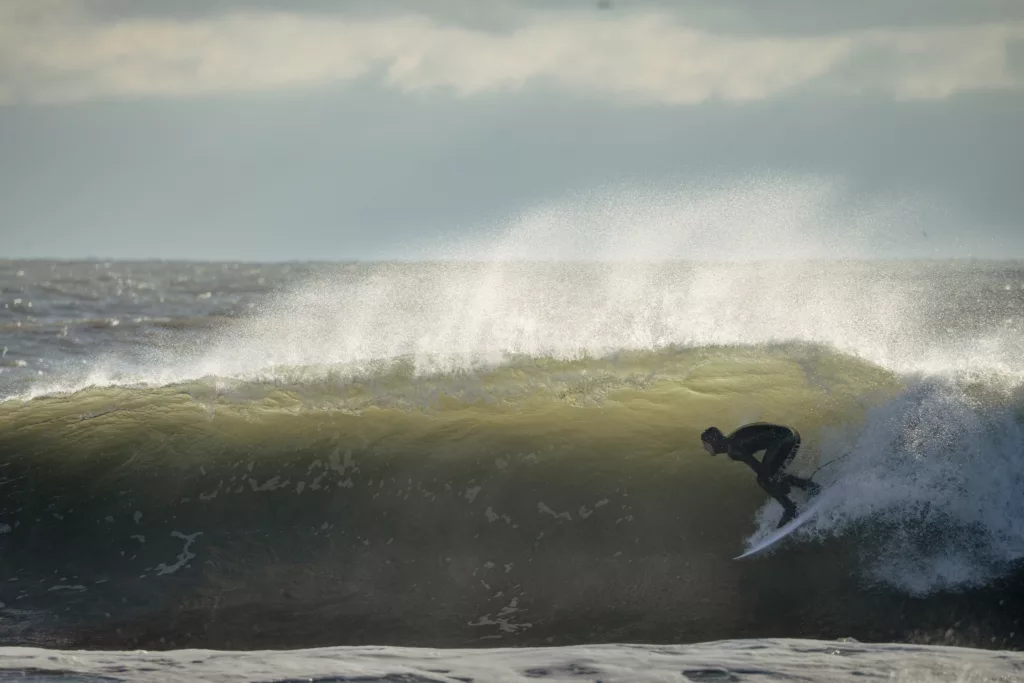
Essential Camera Gear
Durable Camera Body
Your camera should be as tough as the environment you’re shooting in. Weatherproofing is non-negotiable. You want a device that keeps clicking amidst the spray and sand.
Telephoto Zoom Lens
A telephoto zoom lens gives you a front-row seat to the action, even when you’re standing back from the water’s edge. The 70-200mm f/2.8 or 100-400mm f/4.5-5.6 lenses are prime picks for their reach and clarity.
High-Speed Memory Cards
In the thick of the action, every millisecond counts. High-speed memory cards ensure you never miss a beat, catching every droplet, every expression.
Camera Settings
Aperture
Play with aperture to get your subject to pop against a creamy bokeh or to capture the scene in sharp detail. Wider apertures (lower f-numbers) isolate the surfer; smaller apertures (higher f-numbers) bring the whole scene into focus.
Shutter Speed
Fast shutter speeds are your ticket to freezing those dynamic moments. Aim for 1/1000th of a second or quicker to capture the water’s texture and the surfer’s intensity.
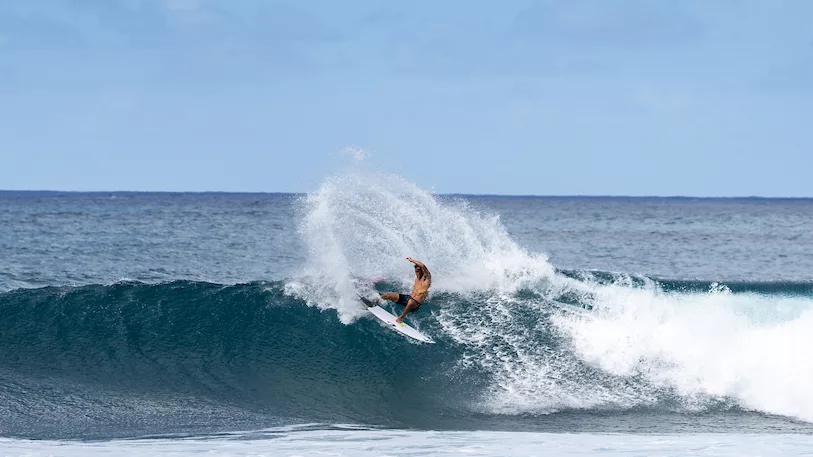
ISO
Balance your ISO with the available light. Keep it as low as possible for the crispest shots, but don’t be afraid to push it when the light dims.
Composition and Perspective
Rule of Thirds
The rule of thirds is your guide to balanced compositions. Place your subject along these lines or at the intersections to engage your viewer and give your images a professional touch.
Leading Lines
Use the ocean’s natural lines—the horizon, the curl of a wave—to draw the eye to your focal point: the surfer.
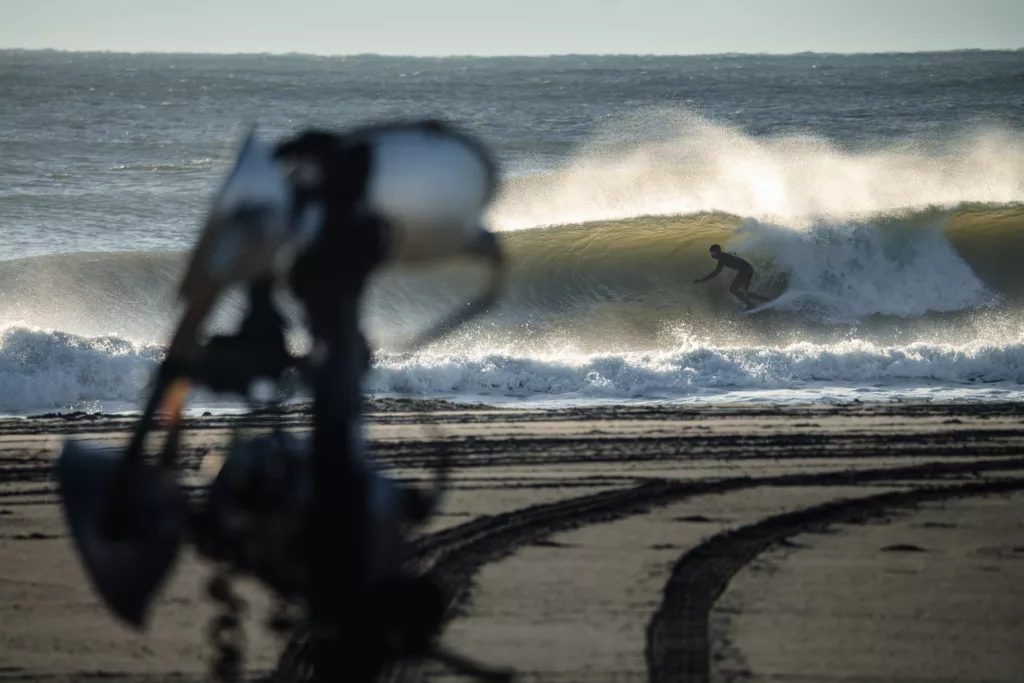
Perspective
Don’t just stand there—crouch, climb, and explore different angles. Low angles amplify the waves’ might, while high angles offer a tactical view of the surfer’s artistry.
Post-Processing Techniques
Color Enhancement
Bring the scene to life in post-processing. Boost those blues, warm up the sun’s caress, and make your images sing with the day’s energy.
Exposure Adjustments
Tweak your highlights and shadows to reveal hidden details and balance your exposure for that perfect shot.
Selective Sharpening
Focus your sharpening on the surfer and the crest of the wave to draw the viewer’s eye and maintain the water’s fluidity.
Embrace these tips, and you’ll be on your way to capturing surf photography that resonates with the energy and beauty of the sport. Keep learning, keep shooting, and dive deeper into the nuances of surf photography with resources like the Surf Photography Techniques guide. With time and patience, your portfolio will swell with stunning shoreline surf images.
Advanced Techniques for Shoreline Surf Photography
As you progress in your surf photography journey, it’s time to dive into some advanced techniques that will add depth and drama to your shoreline captures.
High-Speed Sequences
Create a story in a split second with high-speed sequences. Set your camera to burst mode and hold down the shutter as the surfer carves through the wave. Later, you can select the most dynamic image or present a sequence that showcases the progression of a maneuver.
Manual Focus
Sometimes autofocus can’t keep up with the rapid movement of surfers. Switch to manual focus for greater control, pre-focusing on the spot where you anticipate the action will occur. This technique requires practice, but it’s worth the effort for the precision it can bring to your shots.
Exposure Bracketing
To ensure you capture the perfect exposure, especially in rapidly changing light conditions, use exposure bracketing. Take several shots at different exposures to increase your chances of nailing the lighting in at least one of them.
Creative Use of Filters
Beyond the polarizing filter, consider ND (neutral density) filters for longer exposures, even in daylight. This can create a sense of motion in the water or clouds, adding a surreal or ethereal quality to your surf images.
Crafting the Narrative
Environmental Portraits
Surf photography isn’t just about the action on the waves; it’s also about the culture and environment. Capture the surfer’s preparation, the waxing of the board, or their contemplative moments watching the waves. These environmental portraits tell the story behind the surf.
Black and White Photography
Converting some of your surf images to black and white can bring a timeless, dramatic quality to your work. It accentuates the contrast, texture, and form of the waves and the surfer’s silhouette against the water.
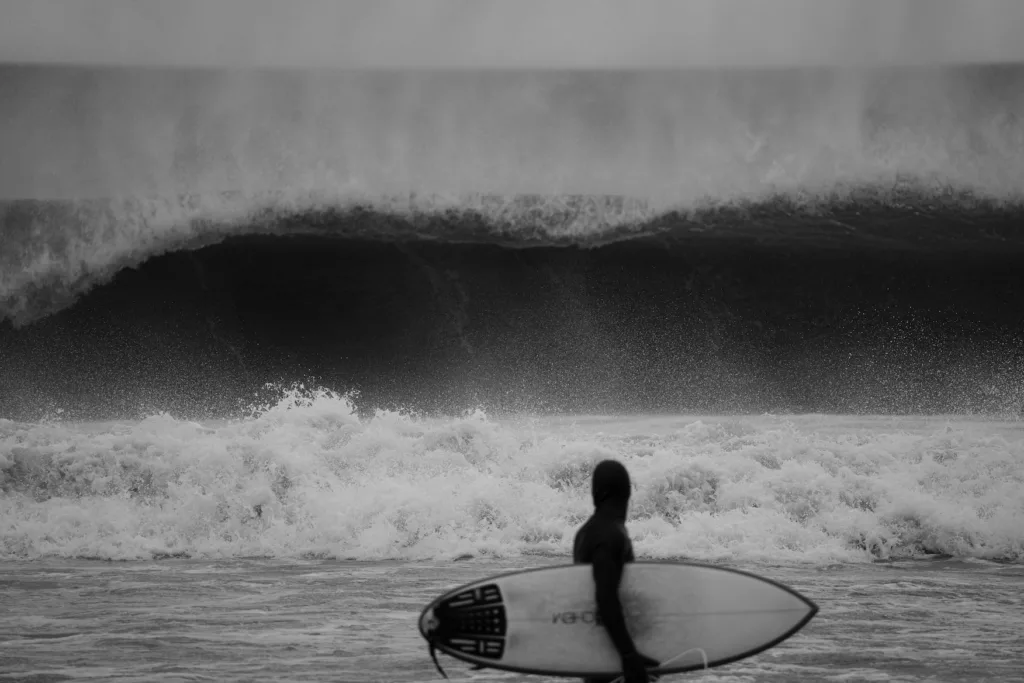
Incorporating Wildlife and Nature
Include elements of wildlife and the surrounding landscape to provide context and a sense of place. A lone seagull flying overhead or the ruggedness of the coastal landscape can add another layer to your surf narrative.
Conclusion: The Art of Capturing the Surf
Surf photography from the shore blends the technical with the artistic, requiring both a keen eye for detail and a passion for the sport. It’s about knowing the environment, being prepared with the right gear, and having the patience to wait for the perfect moment.
Remember to:
- Capture the Story: Every wave and every surfer has a story. Aim to capture it.
- Be Environmentally Conscious: Respect the beach and ocean. Leave no trace behind.
- Keep Learning: Surf photography is an evolving art. Stay curious and keep improving.
Finally, join the surf photography community. Share your experiences, learn from others, and maybe even enter your work in contests to gain recognition. The Surf Photography Contests page is a great place to start.
Wave after wave, click after click, you’ll find that the journey is just as rewarding as the images you capture. With each session, you’re not just taking photos—you’re preserving the ephemeral dance of surfers and the sea for all to witness.
